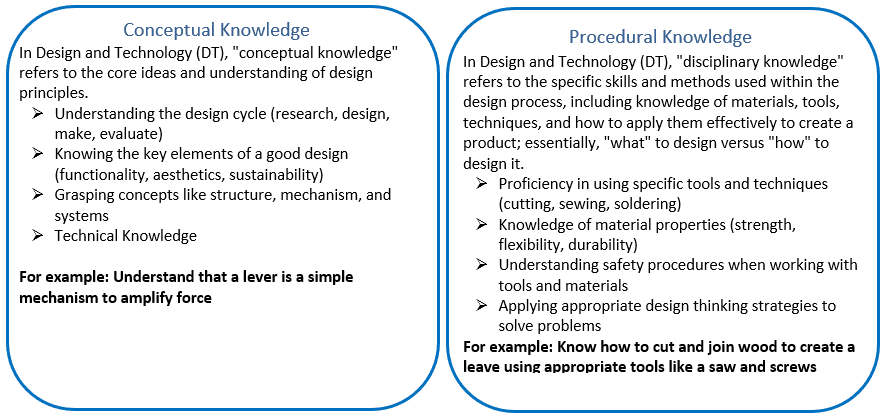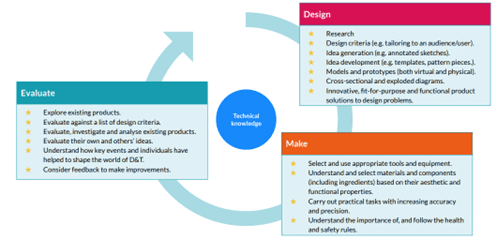Aims
The national curriculum for design and technology aims to ensure that all pupils:
- develop the creative, technical and practical expertise needed to perform everyday tasks confidently and to participate successfully in an increasingly technological world
- build and apply a repertoire of knowledge, understanding and skills in order to design and make high-quality prototypes and products for a wide range of users
- critique, evaluate and test their ideas and products and the work of others
- understand and apply the principles of nutrition and learn how to cook.
Intent
At BHPS we provide children with a challenging and engaging Design and Technology curriculum that develops creativity, sets challenges, engages, and inspires children and equips them with the conceptual and procedural knowledge they need to experiment, invent and create their own products and designs. The curriculum is designed to allow pupils to further their understanding of Design and Technology, in order to use creativity and imagination, to design and make products that solve real and relevant problems within a variety of contexts, considering their own and others’ needs, wants and values.
Throughout their study, the children will acquire and develop the conceptual and procedural knowledge that has been identified within each component of learning and across each year group. Conceptual knowledge is taught in sequences that build on prior learning. Procedural knowledge is a golden thread that runs throughout the units and is, itself, carefully sequenced and matched, wherever possible, to the appropriate conceptual knowledge.
School recognises the distinction between conceptual and procedural knowledge. Conceptual knowledge being the facts, rules and principles and the relationships between them. It can be described as ‘knowing that’. In contrast procedural knowledge is knowledge of methods or processes that can be performed. It can be described as ‘knowing how’. Conceptual knowledge guides the product design process, while disciplinary knowledge enables the practical creation of the product.
Implementation
Our design and technology curriculum provides a clear and comprehensive scheme of work that is based on the Kapow Curriculum. It is sequential, allowing pupils to build their conceptual and procedural knowledge, applying them in a range of ways. Our design and technology curriculum follows the design, make and evaluate cycle. The design process should be relevant in context, to give meaning to learning. While making, children should be given choice and a range of tools to choose freely from. When evaluating, children should be able to evaluate their own products against a design criteria. Each of these steps should be rooted in technical knowledge and vocabulary. This allows time for teaching, practice and repetition – both in a year group and across key stages. Curriculum coverage is sequenced carefully from EYFS to Year 6 which allows key primary themes, conceptual and procedural knowledge to be developed and revisited at a deeper level of learning.

Our design and technology curriculum is designed to allow children time to think, discuss, practise, explore and embed. This allows time for teaching, practice and repetition – both in a year group and across both key stages. Curriculum coverage is mapped out carefully from EYFS to Year 6 which allows some key concepts to be developed at a deeper level of learning, understanding and mastery. There will be, where applicable, links to develop the children’s learning experiences.
Each stage of the design process is underpinned by technical knowledge which encompasses the contextual, historical and technical understanding required for each strand.
Key primary themes, conceptual and procedural knowledge are revisited with increasing complexity in a spiral curriculum model. This allows pupils to revise and build on their previous learning. Components of learning allow for procedural knowledge to be developed through practical activities, which encourage experimental and exploratory learning with pupils using sketchbooks to document their ideas.
Lessons seek to introduce new conceptual knowledge and concepts in small, logical steps, in line with cognitive load theory. Children’s knowledge will be built up gradually, making links, wherever possible, to previous knowledge and other areas of learning. We seek to further children’s ability to commit new learning to long term memory by assessing their retention and revisiting key knowledge. Potential misconceptions will be addressed through carefully selected lesson content and effective feedback.

Impact
The design and technology curriculum is designed in such a way that pupils are involved in evaluation, dialogue and decision making about the quality of their outcomes and the improvements they need to make. This means that pupils not only know key knowledge and information about design and technology but are able to talk confidently about their own learning journey and have a growing understanding of how to improve. The impact of our design and technology teaching can be constantly monitored through both formative and summative assessment opportunities, such as low-stakes tests/quizzes, rapid recall opportunities, varied knowledge-catcher activities and an opportunity to share they knowledge of key vocabulary. Pupil outcomes from each focused activity within a lesson can be used formatively to consider next steps for the class or individual, and/or summatively to inform summaries for the next class teacher or for parents.
Pupils should leave BHPS equipped with the requisite skills and knowledge to succeed in key stage 3 design and technology. They should be equipped with a range of techniques and the confidence and creativity to form a strong foundation for their design and technology learning at Key Stage 3 and beyond
The expected impact of following the Design and Technology Depth Map is that children will:
- Pupils will have clear enjoyment and confidence in design and technology that they will then apply to other areas of the curriculum
- Pupils will ultimately know more, remember more and understand more about Design Technology
- As ‘designers’ pupils will develop knowledge and attributes they can use beyond school and into adulthood.
- Produce creative work, exploring and recording their ideas and experiences
- Evaluate and analyse products using subject-specific language
- Meet end of key stage expectations outlined in the national curriculum design and technology



